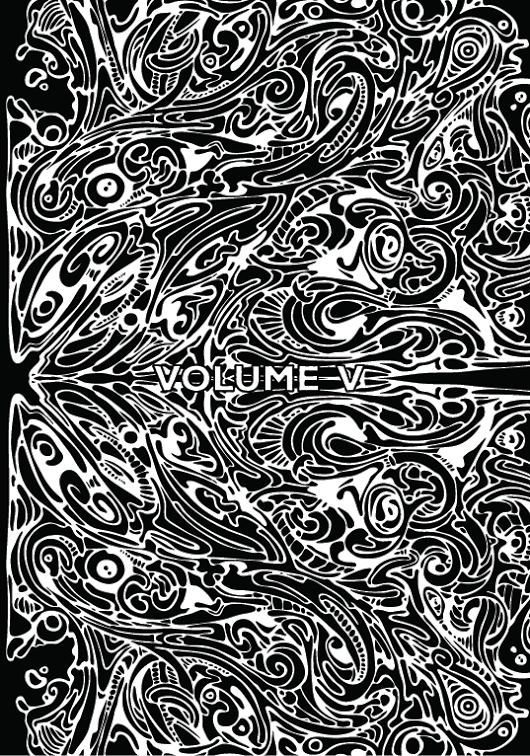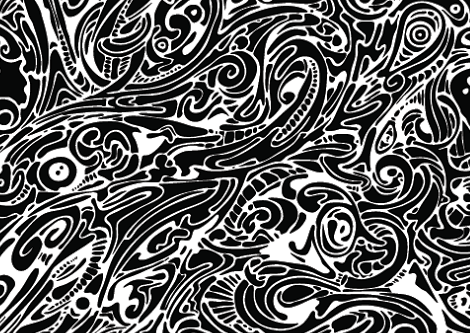This article originally appeared in the Psychedelic Press UK Journal
From its earliest days the medium of cinema has embraced the flight of fancy, the surreal journeyings of the imagination, reified on celluloid by ingenious combinations of special effects. Georges Méliès remains the most celebrated pioneer of this kind of work, producing masterpieces such as A Trip to the Moon (1902), The Kingdom of the Fairies (1903) and The Impossible Voyage (1904), which employed multiple exposures, hand colouring and substitute splicing amongst many other techniques in order to make the filmmaker’s vision come alive.
But when it came to placing specifically drug-induced visions on the silver screen, the inevitable barrier of censorship prevailed for many decades, as of course it did with explicitly sexual and violent content. The Motion Picture Production Code (the Hay’s Code) was very rigorous on the matter of drug use depiction, though it began to ease as the censorship climate softened through the 1950s. This edict was in place until March 1951: ‘The illegal drug traffic must not be portrayed in such a way as to stimulate curiosity concerning the use of, or traffic in, such drugs; nor shall scenes be approved which show the use of illegal drugs, or their effects, in detail.’
Specifically anti-drug movies – such as the risible Reefer Madness (1936) – were permissible, but the first major film to study drug use seriously was The Man with the Golden Arm (1955), directed by Otto Preminger and starring Frank Sinatra as a heroin addict who struggles to stay clean after a spell in prison. Very controversial in its day, it was one of the first films to challenge the Hay’s Code restrictions and it laid the ground for the massive changes that were to follow shortly in the 1960s. Consequently when the acid revolution took place, the acid movie was not far behind.
As someone who took LSD whilst training as a film student, I was often struck by the notion that the sheer magnitude and pan-dimensionality of the acid experience could never be even remotely contained within the circumscribed parameters of film – but at the same time I understood the irresistible urge to try nevertheless. Every filmmaker who has tackled the interior of psychedelia has had to grapple with this issue, with varying degrees of efficacy, but never with total success, and sometimes by descending into visual cliché and a laboured stock of special effects techniques.
The first feature film to actually contain an LSD scene is The Tingler (1959), a body horror piece starring Vincent Price in a ‘mad doctor’ role. He injects himself with the drug (then a legal pharmaceutical) and undergoes an intense fear reaction, suffering blurred undulating vision and finally screaming aloud. But that scene is only a brief episode, and LSD cinema really begins with The Trip (1967), directed by Roger Corman and starring Peter Fonda as a commercials director who undergoes a guided experience, the evolution of which forms the storyline of the entire movie. For Corman, a highly influential figure in low budget horror and indie filmmaking, The Trip was an attempt to explore the emergent counterculture zeitgeist, and it contains some amusingly dated scenes of hippies smoking joints in pads with action-painted walls, including Dennis Hopper, who says the word ‘man’ at the end of almost every sentence. To his credit Corman did take LSD himself in the name of research.
To subjectively illustrate Fonda’s trip, an arsenal of now very familiar effects are employed, including kaleidoscopic patterns in vivid reds, purples and oranges, accompanied by spirals, swirls and spots pulsating in synch to a heartbeat and backed by monotonous kazoo music. Fast cutting, blurring and soft focus, and a spinning, dollying camera simulate the sense of speed, craziness and disorientation; and later into the trip the editing explodes into delirious scrambled montage, including ‘flashbacks’ from earlier scenes, which do lend a sense of savviness and authenticity. Fonda contemplates the energy of an orange, has sex under patterned, strobe light, and goes a bit loopy and paranoid, thinking the cops are after him. There is also a fantasy or ‘head-trip’ meta thread, where he runs around in the rugged Big Sur landscape, pursued by Bergmanesque black-cloaked riders, together with a ‘Death’ figure and a dwarf, and finds himself in gothic candlelit interiors, amongst the props and sets of Corman’s earlier horror movies.
In assembling such an array of techniques, Corman instantly defined a language of screen-based psychedelic illustration, and it would be called upon again and again by others, adapted and improved upon over the years but never entirely transcended. After The Trip, a spate of counterculture, psychedelic movies appeared, including Psych-Out (1968), starring Jack Nicholson who undergoes some pretty hairy STP hallucinations, seeing his friends become the undead. Then there’s Performance (1970), starring James Fox and Mick Jagger, which contains an edgy fly agaric mushroom sequence, where the trippy atmosphere is built through imaginative photography and character transformation rather than special effects. But the best and most celebrated film of this ilk is, of course, the hippy road movie Easy Rider (1969), again featuring the familiar cast of Peter Fonda, Dennis Hopper and Jack Nicholson, with Hopper directing.
Easy Rider captured the essence and spirit of its era, and as a psychedelic road movie it shared qualities with the cult books On the Road and The Electric Kool-Aid Acid Test. The idea of a pair of freewheeling hippy characters wending through the scenic American landscape on chopper motorbikes, having random serendipitous experiences is the stuff of modern mythology. And the film contains so many memorable and iconic scenes. There’s the coke-snorting, money-exchanging opening, with Phil Spector in his Rolls Royce, orchestrated by Steppenwolf’s ‘The Pusher’. Then, in one of several campfire scenes, Jack Nicholson’s drug-wary whiskey-drinking lawyer gets turned on by Fonda with a joint, leading to a delightfully droll stoner UFO conversation. But it’s the Mardi Gras acid sequence in the cemetery with the bikers and the two prostitutes that definitively marks out Easy Rider as a psychedelic movie.
As director, Hopper borrows from the grammar of The Trip, but he creates an altogether more realistic, visceral feel in conjuring up the chaos of tripping – and this is not a good trip. Fast cutting, repeated shots, vertiginous camera moves and occasional fisheye views underscore the whole, and the interjection of random, almost subliminal shots containing indistinct bright colour and light break up the linearity of the experience most effectively. The soundtrack works on a similar level, with a hollow drumbeat from the carnival merging with a chanted prayer, Fonda’s introspective mumblings and eventually the girls screaming out, ‘I’m gonna die!’ One of the girls strips off to provide nudity – an almost obligatory requirement of the early trip sequence – and the heavy religious imagery of the cemetery setting coupled with the emergence of painful thoughts and memories makes for a bummer of an experience for all concerned.
This dystopian turn of events coming shortly before the film’s brutally downbeat climax lends a kind of power and seriousness to its message that a sweeter, all ‘peace and love’ treatment might have failed to attain. The freedom of the road, and perhaps freedom of the spirit, is ephemeral, so make the most of it while it lasts. But on the flipside of this perspective, the ‘swinging sixties’ and the counterculture movement were perceived by many filmmakers as a ripe source for a new wave of comedy. The Woody Allen-scripted What’s New Pussycat (1965) is an early example of the use of countercultural elements in a zany, screwball manner; and Mel Brooks’ The Producers (1968) features within the hilarious ‘Hitler auditions’ a character by the name of ‘Lorenzo St. DuBois’ – or L.S.D. for short – who performs the psychedelic number ‘Love Power’, wearing suede thigh boots, finger cymbals and sporting a bunch of flowers.
Within this milieu, an unlikely ‘acid comedy’ was forged – directed by Otto Preminger (The Man with the Golden Arm), who took advice from and tripped with Timothy Leary in order to prepare himself for his task. Skidoo (1968) stars Jackie Gleeson as a mobster who whilst in prison accidentally ingests some blotter LSD and goes on a very weird trip indeed. He sees his cellmates getting smaller, Alice-style, in a purple haze as one of them spouts mystical philosophy. Then come the inevitable eyes in the walls, machine guns barrels twisting to fire bullet-hole mathematical equations, and the head of God – Groucho Marx, complete with cigar – rotating on top of a large woodscrew. Later they use the rest of the acid to trip out the entire prison so they can escape in a balloon. It’s all good slapstick fun and perhaps a bit silly, and Skidoo wasn’t a success at the time, but the psychedelically-addled comedy, or the comic ‘stoner movie’, was a genre that was destined to live on and on.
There have been many examples over the decades, too numerous to comprehensively list here. The best would include I Love You, Alice B. Toklas (1968), Fritz the Cat (1972), the work of Cheech and Chong, Dazed and Confused (1993), The Big Lebowski (1998), Dude, Where’s My Car? (2000), Smiley Face (2007), Pineapple Express (2008), Crystal Fairy & the Magical Cactus (2013) and Kid Cannabis (2014). Then there are the memorable psychedelic interludes within otherwise regular comedies, such as the crazy ‘Camberwell Carrot’ joint-smoking scene in Withnail and I (1987); Seth Rogen all wide-eyed and spaced out on mushrooms watching Cirque du Soleil in Knocked Up (2007); and who can forget Renée Zellweger tripping her tits off on a sun-drenched Thailand beach in Bridget Jones: The Edge of Reason (2004)?
There is always a sense of excitement when a name director is reported to be taking on psychedelic themes in a project, perhaps departing from the usual groove, and this is accompanied by a build-up of expectancy before the film is released. Such was the case with Ken Russell and Altered States (1980), which at first sounded like a full-on serious treatment of psychonautic adventure, based as it was on John C. Lily’s sensory deprivation tank and LSD experiments, and scripted by Paddy Chayefsky, whose previous writing credits included the superlative media satire Network (1976). But Chayefsky and Russell fell out in the course of production, the former wanting to realise a credible movie with big overarching themes, and the latter wanting to make a ‘Ken Russell film’, bringing the visual excesses of his previous work to bear on the trip experience and ultimately straying into absurd baroque hyperbole and then complete preposterousness.
The New York Times critic Janet Maslin had this to say at the time: ‘The movie, part joke and part nightmare, is the story of a man who experiments with hallucinogenic substances, searching for what he calls his “unborn soul” and longing to re-experience the birth of man. In the course of this adventure, he turns into an ape and scares the daylights out of everyone around him. Really, that’s all you need to know.’
To be fair Altered States is actually okay in parts. The isolation tank hallucinations, which of course are purely internal, have an entrancing Salvador Dali flavour of psychedelic prestidigitation: Dr Jessup (William Hurt) relives the death of his father in a montage of imagery, including fish swimming in the sky, a crucified figure with the head of a seven-horned seven-eyed sheep, the sacrifice of the said sheep with its blood dripping over an ornate codex, and then fast-flickering sexual and cosmic scenes unfolding to John Corigliano’s impressive symphonic score.
But it’s when the visions and transformations begin to externalise that the problems arise. Altered States’ main trip sequence takes place in Mexico where Jessup partakes in a shamanic ritual involving ingesting some brew with a group of natives in a cave. Immediately the fireworks begin – literally, the cave fills with pyrotechnic explosions! From there we find ourselves back in the territory of The Trip, being served an over-cooked smorgasbord of frenetic fast-cutting weird imagery, including tribal dancing in threatening masks, writhing snakes, a tea party amongst fisheye-view sunflowers, mushroom images and mushroom clouds, and of course the obligatory nude woman. The overriding sense is that Russell isn’t much interested in evoking a genuine trip experience, but instead is using the vocabulary of trip cinema in a schematic way to create a bombastic spectacle.
From there it only gets worse. When Jessup returns to the tank and undergoes what one would expect are mental or spiritual psychedelic transformations, they are rendered as fully physical, concretised in the outside world with a heavy reliance on glow and phosphorescence effects. By the time the ape man bursts out of the lab and runs amok, Altered States has lost any sense of seriousness and descended to the level of a Jekyll and Hyde parody or B-movie schlock horror – not even good horror, such as David Cronenberg’s The Fly (1986), which has strong internal logic and a plausible rationale for the transmogrification of man into insect. In all the dope and acid scare stories from Reefer Madness onwards, no one – not even a Daily Express journalist – has suggested that doing hallucinogens will turn you into a monkey! Paddy Chayefsky reacted by having his real name removed from the credits.
What then was Ken Russell playing at? To answer that, we must consider another film, not a drug or horror film but a science fiction one, probably the greatest science fiction movie ever, which has strong psychedelic overtones in its cosmic, mind-expanded content and some of the best trippy visuals ever. Stanley Kubrick’s 2001: A Space Odyssey (1968) ambitiously links the dawn of human intelligence in the ape state with potential superhuman evolutional states by means of the recurring mysterious black monolith. In the movie’s final ‘Star Gate’ sequence, astronaut Bowman travels along an infinite corridor of eidetic coloured patterned light and unfolding cosmological events, and then finds himself ageing rapidly, dying and ultimately being reborn as a super-evolved luminous glowing ‘embryo’. This sequence, realised through slit-scan photographic techniques, filters, negative-image and posterisation effects, is a far better recreation of psychedelic visuals and head spaces than anything in any drug movie, and it still stands up well in today’s environment of ubiquitous computer-generated imagery.
More importantly though, the ‘Star Gate’ sequence and 2001 as a whole actually mean something, which is put across beautifully in film terms. We are made to look at human evolution, past, present and future, from a cosmic perspective, and the dimension of space exploration and possible extraterrestrial influence is presented – literally and metaphorically – as a kind of key or enabler. Very evidently in Altered States the creators are trying to achieve something similar, with hallucinogens as the key, and the influence of 2001 shows in many ways, not least in the ‘phosphorescent man’ and ape sequences! But by bunging human evolutional states and mystical states together without suitable supporting narrative devices, Russell rather spoils what was a terrific opportunity.
2001: A Space Odyssey belongs to another important movie category, namely films that are simpatico with psychedelia but which don’t actually feature the drugs themselves – or else contain vague and ambiguous references, meaningful mainly to insiders. Released in 1968, 2001 hit the height of the new boom in acid consciousness and was popular with ‘heads’, some of whom would watch it while actually under the influence. It’s long dialogue-free sequences, combining visual spectacle and music, were – like modern jazz or acid house – better appreciated from the ‘high’ perspective. This propensity was not lost on the distributors, who tagged the film ‘the ultimate trip’ – space trip of course, nudge wink. Secret – or not so secret – code of this kind is more the province of the music world, and in the same era the supposed reference to LSD in the title of the Beatles’ song ‘Lucy in the Sky with Diamonds’ led to frenzied speculation and denials.
And following in the groove of such acid-tinged pop songs, the Beatles’ film Yellow Submarine (1968) is so chocked full of psychedelic imagery – from the generic bright colours and fluid metamorphic style of the animation to the trippily visualised Sgt. Pepper numbers themselves – that one might almost feel a sense of enough is enough. But because it is all contained within the safe anodyne cartoon universe and there are no actual scenes of drug use or verbal drug references, it escaped any kind of censure and was deemed acceptable family entertainment. I saw it on release at the age of thirteen, and it had a profound impact on me, counting as I later realised as my first real taste of psychedelia, albeit a vicarious one.
It’s interesting to note that in this same psychedelic boom period, traditional animation was re-evaluated for its usefulness as altered-states viewing material, and one film that passed the test particularly well was the Disney produced Fantasia (1940). Like 2001, it contains a fair amount of ‘ambient imagery’ set to classical music and on first release Fantasia was not a great success; audiences didn’t get it, as it lacked sufficient narrative underpinning. But when Disney re-released it in 1969, promoting it with a psychedelic-style poster, it went into profit for the first time, proving very popular with younger people who would watch it lying down in the cinema front rows.
Having mentioned David Cronenberg, he is the next notable director to examine in the development of psychedelic movies, and with his roots as a master of body horror and weird sci-fi combined, he further underlines the continuing affinity of ‘trippy’ and genre filmmaking. With his reputation for lurid, disturbing pieces such as Shivers (1975), Rabid (1977) and Dead Ringers (1988), Cronenberg was a natural choice for adapting William Burroughs’ most famous novel for the screen. Naked Lunch (1991) combines material from the novel with details from Ted Morgan’s 1987 biography and further spices up the mix with Burroughs’ adventures in pest control from Exterminator! The result is neither a faithful exposition of Burroughs’ creative work nor an accurate biopic of the man, but is instead a curious mash-up of Burroughs’ and Cronenberg’s ideas, the latter having gene-spliced his creativity with the former – as Cronenberg says in a documentary within the DVD extras package.
Burroughs purists, such as myself, thought Cronenberg had taken too much of a liberty at the time of release, but core Cronenberg fans and bizarre movie fans generally – many of whom hadn’t read the original novel – delighted in the result. Whatever else, Cronenberg’s Naked Lunch undoubtedly achieves an altogether new and unique level of weirdness in drug movies. Eschewing real drugs, he goes down the sci-fi route of made-up ones, giving us Bill Lee’s bug extermination powder – ‘A literary high… A Kafka high… It makes you feel like a bug…’ – Burroughs’ own ‘black meat of the giant aquatic Brazilian centipede’ and the pièce de résistance, semen-like ‘Mugwump fluid’. Under the influence of such dubious substances, the flavour of Burroughs’ fractured hybrid hallucinated netherworlds does come across, in scenarios where nothing is fully natural or rational.
Lee’s mission as a writer is given a schizoid dimension when he receives messages from giant cockroaches – and later hybrid typewriter/cockroaches – which talk out of livid pink assholes concealed under their wings. It’s interesting that Burroughs’ original ‘taking asshole’ routine was inspired by the ventriloquist-being-taken-over-by-his-dummy episode in the great Ealing portmanteau horror film Dead of Night (1945), and here the schizoid rationale is re-rendered back into film as a very altered kind of ventriloquism. The cockroach talks of agents and spy networks, and orders Lee to kill his wife, which he does.
This is one biographical detail that remains intact, and it provides the axis for the movie, identifying the fatal shooting of Burroughs’ wife as the catalyst that formed him into a fully-fledged writer. Afterwards Lee flees to ‘Interzone’, a surreal version of Tangiers, uses insect typewriters to write his agent reports, which become the text of his novel, and undergoes more drug and sex adventures, meeting the hideous Mugwumps – actualised as animatronics and rubber models – and then getting involved with Dr Benway in his quest to harvest the prized ‘Mugwump fluid’. An average day at the office for a Burroughs protagonist!
Ultimately Naked Lunch is part horror film, part drug film and part reality-bender, becoming an engine of weirdness in its own right. Within Cronenberg’s oeuvre it connects to his earlier reality-bender Videodrome (1983) and his later one eXistenZ (1999), and this whole arm of filmmaking is significant in the context of movie psychedelia. A reality-bender subverts the quotidian view by juxtaposing it with existential otherness, the cause of which may be defined or undefined, and the quality of which may be surreal, fantastical, freakish, cybernetic, dream-like, coma-like or trip-like – or various combinations of these. Again there are many examples throughout movie history, one of the best being the marvellous Powell-Pressburger surreal war film A Matter of Life and Death (1946), where an RAF pilot who should have died in an air crash receives visits from a celestial being, travels up a stairway to heaven past the statues of great thinkers, and eventually undergoes a full-scale heavenly court trial to decide his fate. Specifically, drug-induced hallucinations don’t figure in the equation at all, but the feel, the ambiance, is undeniably trippy.
In more recent times, the acknowledged master of this kind of trippy reality-bender is David Lynch, though he says he has never taken any drugs, despite being a student in the sixties when all around were doing them. Nevertheless, from his early film Eraserhead (1977) through to Lost Highway (1997) and Inland Empire (2006), he has perfectly captured the distinctively unhinged quality of the trip and fever dream. But it’s his masterpiece, the surreal film noir Mulholland Drive (2001) that does this trick better than anything in cinema. With its compelling inside-out dream logic and unguessable left-field reality-shifts, spiraling upwards in magnitude as the narrative unfolds, Mulholland Drive is not about tripping, the movie itself is a trip.
***
BIBLIOGRAPHY:
Dirks, Tim. ‘2001: A Space Odyssey Review’. Filmsite. http://www.filmsite.org/twot.html
Dirks, Tim. ‘Easy Rider Review’. Filmsite. http://www.filmsite.org/easy.html
Keen, Roger. The Mad Artist: Psychonautic Adventures in the 1970s. Createspace, 2010.
Keen, Roger. ‘Naked Lunch DVD Review’. Video Vista. August 2004. http://www.videovista.net/reviews/august04/nakedlunch.html
Keen, Roger. ‘The Producers DVD Review’. Video Vista. October 2004. http://www.videovista.net/reviews/oct04/producers.html
Keen, Roger. ‘Whose Lunch Is It Anyway?’ Critical Wave: The European Science Fiction & Fantasy Review, 27, 10-14. 1992.
Kuersten, Erich. Acidemic Blog. http://acidemic.blogspot.co.uk/
Lössl, Ulrich. ‘Dying on your way to the cigarette-machine’ (David Lynch Interview). Focus. November 1999. http://www.davidlynch.de/99focustrans.html
Maslin, Jane. ‘Ken Russell’s Altered States’. The New York Times. December 1980. http://www.nytimes.com/movie/review?res=9B07E6DB1339F936A15751C1A966948260
Miles, Barry. William S. Burroughs: A Life. London: Weidenfeld & Nicolson, 2014.
Smalley, G. ‘Altered States Review’. 366 Weird Movies. July 2010. http://366weirdmovies.com/62-altered-states-1980/
Wikipedia. ‘List of films featuring hallucinogens’ (and link pages). https://en.wikipedia.org/wiki/List_of_films_featuring_hallucinogens















